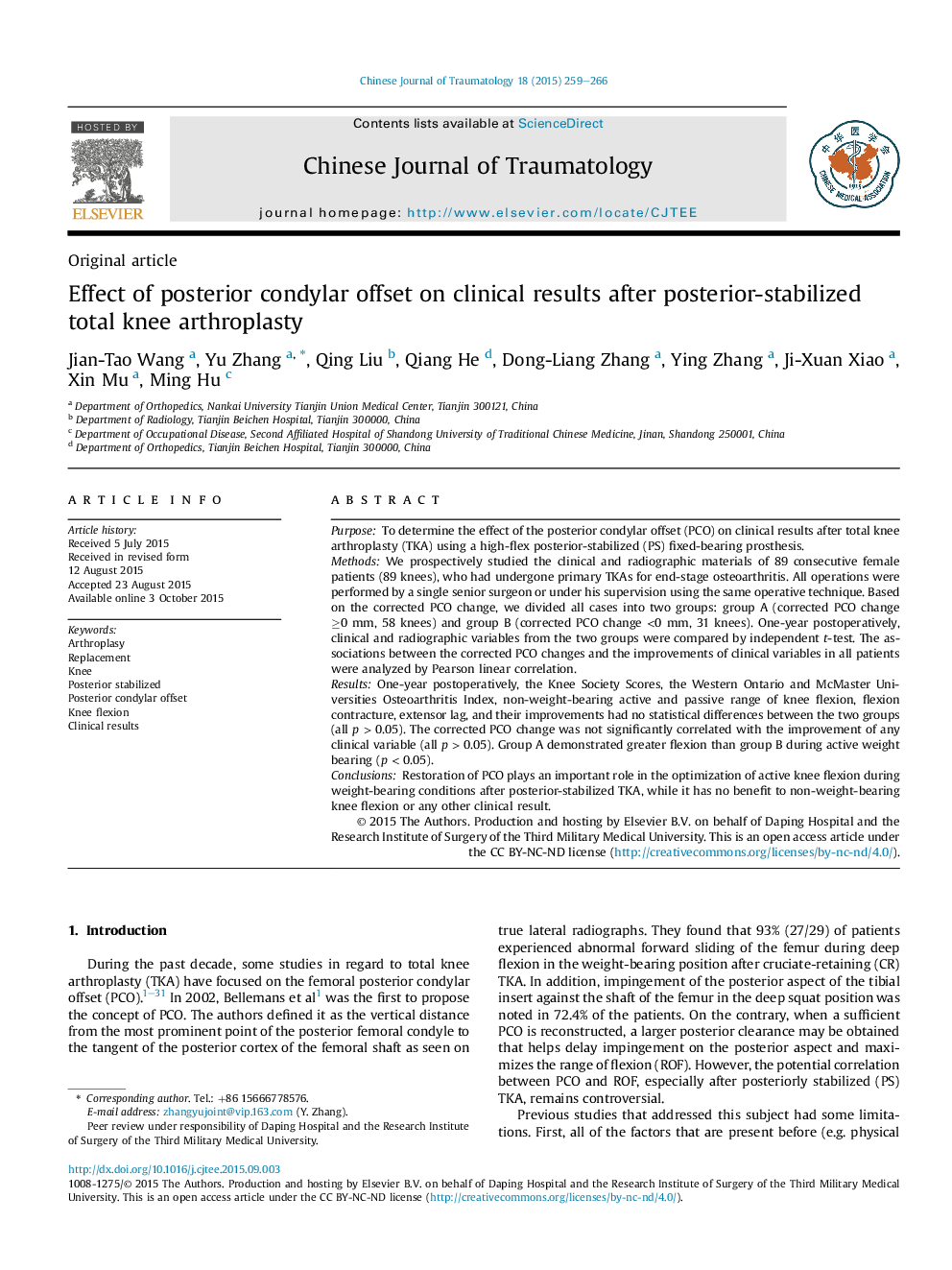| Article ID | Journal | Published Year | Pages | File Type |
|---|---|---|---|---|
| 3107225 | Chinese Journal of Traumatology | 2015 | 8 Pages |
PurposeTo determine the effect of the posterior condylar offset (PCO) on clinical results after total knee arthroplasty (TKA) using a high-flex posterior-stabilized (PS) fixed-bearing prosthesis.MethodsWe prospectively studied the clinical and radiographic materials of 89 consecutive female patients (89 knees), who had undergone primary TKAs for end-stage osteoarthritis. All operations were performed by a single senior surgeon or under his supervision using the same operative technique. Based on the corrected PCO change, we divided all cases into two groups: group A (corrected PCO change ≥0 mm, 58 knees) and group B (corrected PCO change <0 mm, 31 knees). One-year postoperatively, clinical and radiographic variables from the two groups were compared by independent t-test. The associations between the corrected PCO changes and the improvements of clinical variables in all patients were analyzed by Pearson linear correlation.ResultsOne-year postoperatively, the Knee Society Scores, the Western Ontario and McMaster Universities Osteoarthritis Index, non-weight-bearing active and passive range of knee flexion, flexion contracture, extensor lag, and their improvements had no statistical differences between the two groups (all p > 0.05). The corrected PCO change was not significantly correlated with the improvement of any clinical variable (all p > 0.05). Group A demonstrated greater flexion than group B during active weight bearing (p < 0.05).ConclusionsRestoration of PCO plays an important role in the optimization of active knee flexion during weight-bearing conditions after posterior-stabilized TKA, while it has no benefit to non-weight-bearing knee flexion or any other clinical result.
